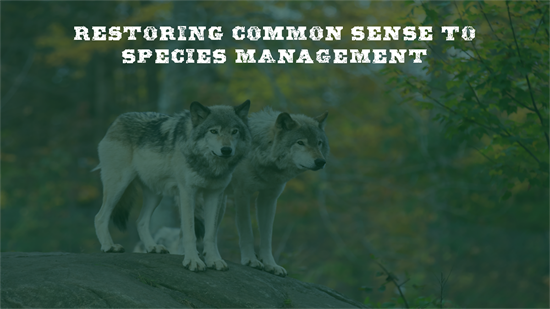Restoring Common Sense to Species Management
Washington,
April 14, 2025
Restoring Common Sense to Species ManagementBy Vice Chairman Bruce Westerman (AR-04) If a football team were only making first downs on 3 percent of their possessions, it would be foolish to blindly continue running the same plays while expecting a different result. Instead, the team would re-evaluate their strategy and find a new path forward. Similarly, there are times when Congress passes legislation with lofty offensive and defensive goals only to fall short and fail to fulfill its promises. For an example, look no further than the Endangered Species Act (ESA). The ESA has been a defensive juggernaut with a 99 percent effectiveness at preventing listed species from becoming extinct. But it has been a dismal failure in its offensive objective of recovering and removing species from the list, which is a better measure of victory than simply preventing extinction. Since it was signed into law more than 50 years ago, a dismal 3 percent of listed species have ever been recovered and taken off the Endangered and Threatened Species list. I’ve often described these lists as the “Hotel California,” where you can check in, but you can never leave. The ESA’s original intent was to evaluate and identify at-risk species and provide a strategy toward full recovery. Fifty years later, this law is in dire need of modernization. It’s time to re-evaluate and run a new offense while ensuring the defense stays strong. For the sake of listed species and the humans living around them, Congress must advance commonsense Endangered Species Act reforms that return power to the states and private landowners to conserve at-risk species. That is why I was proud to introduce the ESA Amendments Act of 2025 in the U.S. House of Representatives. This legislation will implement critical measures to take power away from litigious environmental activist groups who blatantly profit by weaponizing species management. We’ll correct this by giving more responsibilities to state, local, and tribal communities that have a much better understanding of local species, their needs, and their habitats. The bill will also streamline the ESA permitting process, providing greater transparency and certainty to the regulatory process. We wouldn’t call a 3 percent success rate a winning offense, and the federal government shouldn’t either. It’s time to bring common sense back to America’s species management and ensure that our rich, abundant diversity of native wildlife thrives for generations. |
Stay Connected
Use the following link to sign up for our newsletter and get the latest news and updates directly to your inbox.


